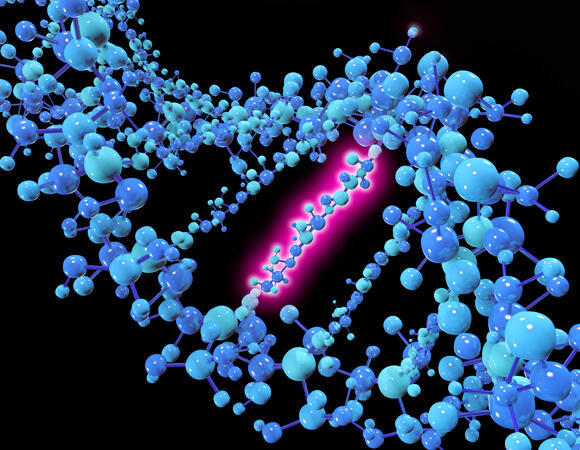Children inherit their traits through a combination of genetic material from both parents - half from the mother and half from the father. However, sometimes random changes occur in the inherited genetic code, called mutations, which were not present in the parents’ code. These mutations are the driving force of evolution, as they create genetic changes between individuals that natural selection can act upon.
Some mutations may be positive and contribute to the survival or reproduction of the individual in which they occur, while others may significantly impair their ability to survive. Many mutations are neutral and do not confer advantages or disadvantages in the current environmental conditions. But how common are mutations, really?
1 View gallery


A mutation can occur randomly or following exposure to radiation and chemicals. A single mutation |
(Illustration: Science Photo Library)
There are many factors that cause mutations. In some cases, external factors like certain chemicals or high-energy radiation (ionizing radiation), such as radioactive radiation, can break or alter DNA. In other cases, mutations may arise from internal factors within the cell. These may be oxidative substances that are created by cellular activity or errors in the process of DNA replication during cell division.
In a long-term study that began in 1988, Richard Lenski from Michigan State University in the United States followed 12 cultures of the bacteria Escherichia coli (E. coli). Using technology to determine the sequence of genes (DNA sequencing), he compared the changes that occurred in the genetic code of the bacteria in the cultures over more than 70,000 generations and found that the natural mutation rate of the bacteria is one mutation per ten billion base pairs, which are the building blocks of the genetic code in DNA.
This means that the bacterium, which has only about five million base pairs, undergoes one mutation approximately every thousand generations, or thousand cell divisions. Since the culture contains billions of bacteria, there is a chance for a mutation in almost every base of the genome.
However, this experiment ignores lethal mutations that kill the bacteria carrying them and disappear from the culture, so they cannot be sequenced. Mutations that negatively affect the growth rate will also not be detected in the experiment, since the more successful cells will dominate the culture. In fact, the experiment only measures the average mutations of the entire population over thousands of generations. We still do not know the mutation rate of an individual dividing bacterium.
The rate of mutation in each division
Is it possible to determine the rate of mutation in individual cells, including those with negative effects on bacteria? To investigate this, microbiologists Marina Elez, Lydia Robert, and their colleagues from the University of Sorbonne in Paris used a technology called microfluidics, a narrow tube system with a width comparable to that of a single E.coli bacterium. The system enables the scientists to supply nutrients into the tubes that can sustain the trapped bacteria and allow the scientists to monitor their cell growth rate, division rate, or death under a microscope.
In addition, the cells possess a biochemical fluorescent marker that is activated each time an error occurs in DNA during division. Therefore, in addition to counting the cells that divide after the marker appears, the researchers can also track the cells that grow or divide slowly after the mutation emerges, as well as those that stop dividing (i.e., die) because of it.
The experimental results indicated that the mutation rate was about 0.1 percent per generation, meaning one mutation for every thousand bacterial divisions. This finding matches Lensky’s discovery. Among all mutations, one percent were lethal, and an additional 0.3 percent substantially reduced the cell growth rate. The vast majority were neutral.
What about humans?
Experiments that compared the genetic sequence of two parents and their child or compared large populations showed that the mutation rate is roughly 1 per 100 million bases per generation, with 10-20 mutations between parent and child in each generation.
The reason for the discrepancy in the number of mutations per generation between bacteria and humans is that the human genome is almost a thousand times larger than that of bacteria and contains around three billion bases. Additionally, one generation of bacteria spans a single cell division, while humans are multicellular organisms, so a "generation" encompasses about 20-30 cell divisions to create an egg cell in the mother (and around ten times that to create a sperm cell in the father).
Calculations based on these data indicate that the rate of mutations in humans is actually similar to that of bacteria, ranging from 1 in a billion to 1 in ten billion bases per cell division. Similar findings have been observed in laboratory mice, fruit flies (Drosophila), and Arabidopsis plants.

